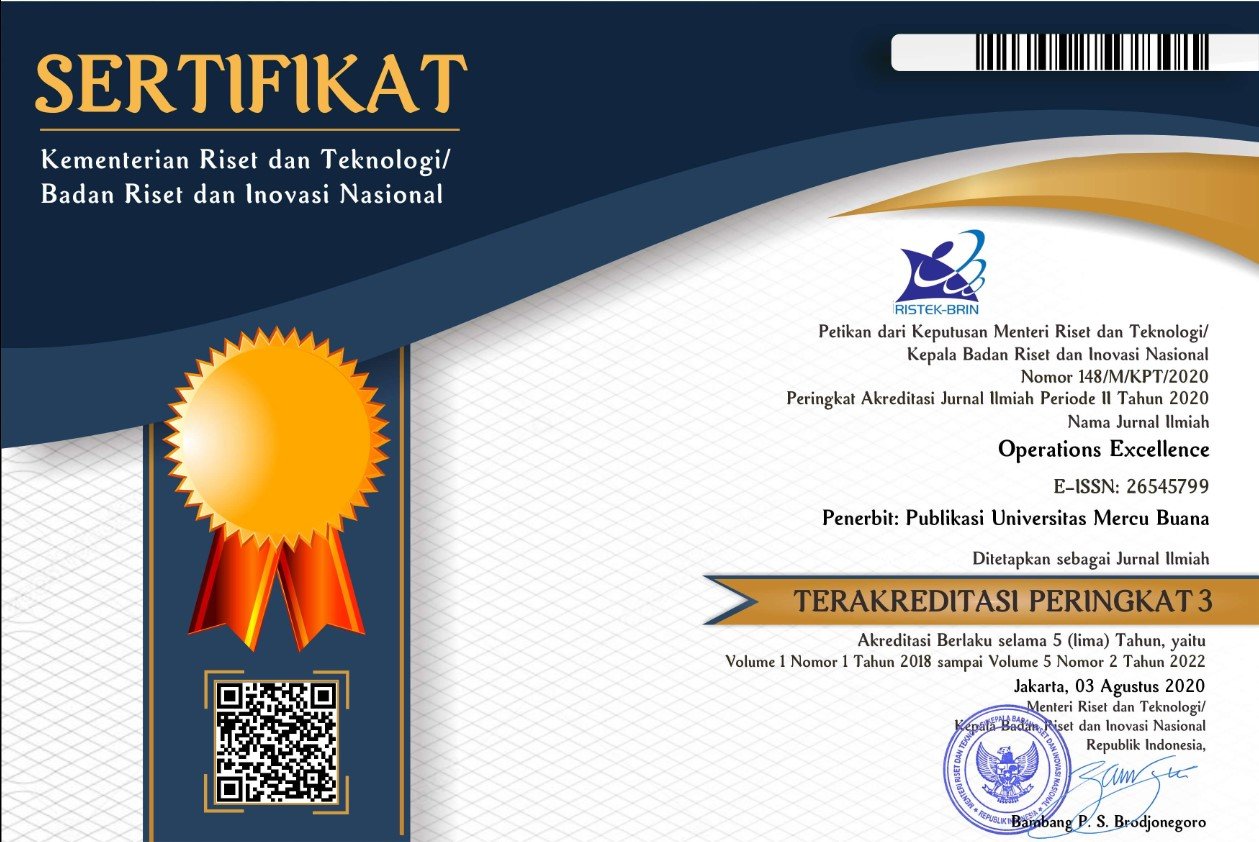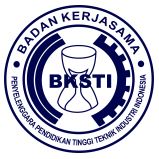Project management improvement with proposed project management office: case in palm oil industries and machineries
Abstract
Keywords
Full Text:
PDFReferences
Aubry, M., Hobbs, B., Muller, R., & Blomquist, T. (2010). Identifying Forces Driving PMO Changes. Project Management Journal. https://doi.org/10.1002/pmj.20191
Cunha, J. A., & Moura, H. (2014). Project Management Office : The State of the Art Basaed on a Systematic Review. European Conference in Management, Leadership & Governance.
De Smet, A. (2018). The Agile Manager. McKinsey Quarterly, June, 1–6.
Fashina, A. A., Omar, M. A., Sheikh, A. A., & Fakunle, F. F. (2021). Exploring the significant factors that influence delays in construction projects in Hargeisa. Heliyon, 7(4). https://doi.org/10.1016/j.heliyon.2021.e06826
Fernandes, G., Pinto, E. B., Araújo, M., & Machado, R. J. (2020). The roles of a Programme and Project Management Office to support collaborative university–industry R&D. Total Quality Management and Business Excellence, 31(5–6), 583–608. https://doi.org/10.1080/14783363.2018.1436963
Ferreira, M., Tereso, A., Ribeiro, P., Fernandes, G., & Loureiro, I. (2013). Project Management Practices in Private Portuguese Organizations. Procedia Technology, 9(December), 608–617. https://doi.org/10.1016/j.protcy.2013.12.067
Hubbard, D. G., & Bolles, D. L. (2015). PMO Framework and PMO Models for Project Business Management. PM World Journal, IV(I), 22.
Kerzner, H. (2016). PROJECT MANAGEMENT BEST PRACTICES. In Https://Medium.Com/. https://medium.com/@arifwicaksanaa/pengertian-use-case-a7e576e1b6bf
Kutsch, E., Ward, J., Hall, M., & Algar, J. (2015). The Contribution of the Project Management Office: A Balanced Scorecard Perspective. Information Systems Management, 32(2), 105–118. https://doi.org/10.1080/10580530.2015.1018768
Mariusz, H. (2014). Models of PMO Functioning in a Multi-project Environment. Procedia - Social and Behavioral Sciences, 119, 46–54. https://doi.org/10.1016/j.sbspro.2014.03.008
Monteiro, A., Santos, V., & Varajão, J. (2016). Project Management Office Models – a review. Procedia - Procedia Computer Science, 100, 1085–1094. https://doi.org/10.1016/j.procs.2016.09.254
Oliveira, C., Tereso, A., & Fernandes, G. (2017). PMO Conceptualization for Engineering and Construction Businesses. Procedia Computer Science, 121, 592–599. https://doi.org/10.1016/j.procs.2017.11.078
Phan, J. (2015). Using the project management office to connect the dots between projects and strategy. Healthcare Management Forum, 28(2), 65–68. https://doi.org/10.1177/0840470414562638
Pinto, A., De Matheus Cota, M. F., & Levin, G. (2010). The PMO Maturity Cube, a Project Management Office Maturity Model. PMI Research and Education Congress 2010, Washington D.C., USA, February, 1–56. https://hennyportman.files.wordpress.com/2013/04/pmomaturitycubeeng.pdf
Project Management Institution, I. (2013). A Guide to the Project Management Body of Knowledge (PMBoK Guide) - Fifth Edition (5th ed.). Project Management Institute, Inc.
Sandhu, M. A., Al Ameri, T. Z., & Wikström, K. (2019). Benchmarking the strategic roles of the project management office (PMO) when developing business ecosystems. Benchmarking, 26(2), 452–469. https://doi.org/10.1108/BIJ-03-2018-0058
Spalek, S. (2012). The role of project management office in the multi-project environment. International Journal of Management and Enterprise Development, 12(2), 172–188. https://doi.org/10.1504/IJMED.2012.047891
Unger, B. N., Gemünden, H. G., & Aubry, M. (2012). The three roles of a project portfolio management office: Their impact on portfolio management execution and success. International Journal of Project Management, 30(5), 608–620. https://doi.org/10.1016/j.ijproman.2012.01.015
DOI: http://dx.doi.org/10.22441/oe.2024.v16.i1.097
Refbacks
- There are currently no refbacks.
Copyright (c) 2024 Operations Excellence: Journal of Applied Industrial Engineering

This work is licensed under a Creative Commons Attribution-ShareAlike 4.0 International License.
Journal ISSN:
| Print ISSN: 2085-4293 | |
| Online ISSN: 2654-5799 |
Tim Editorial Office
Operations Excellence: Journal of Applied Industrial Engineering
Magister Teknik Industri Universitas Mercu Buana
Jl. Raya Meruya Selatan No. 1 Kembangan Jakarta Barat
Email: [[email protected]]
Website: http://publikasi.mercubuana.ac.id/index.php/oe
Journal DOI: 10.22441/oe
The Journal is Indexed and Journal List Title by:

.png)
.png)
.png)


Operations Excellence: Journal of Applied Industrial Engineering is licensed under a Creative Commons Attribution-NonCommercial-ShareAlike 4.0 International License.










